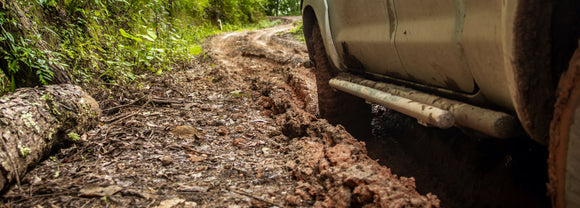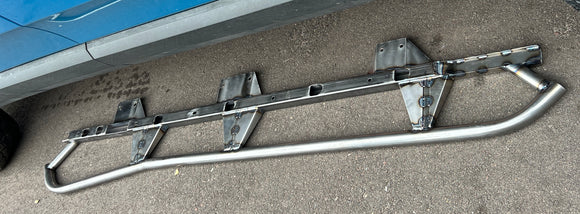
Planning a Road Trip in Your Electric Truck: The Basics
1 comment
Planning a Road Trip in Your Electric Truck: The Basics
So you’re thinking about buying an electric truck or SUV. Or, maybe you own a Tesla and are considering making the jump to another manufacturer while you wait for the Cybertruck. In either case, you may wonder just how you’ll drive long distances without a gas station or your trusty Tesla Supercharger network. In this post we’ll try to cover this from the perspective of a complete noob. That said, the experience is really more simple than you might think once you understand the basics.
EV Charging Connector Types:
The first step to your journey is to understand what kind of connector/plug your vehicle is equipped with. These connectors fall into three major categories, the Tesla connector, CHAdeMo, and CCS. If you live in North America and are not driving a Tesla or a Nissan Leaf, there is a 99.9% chance your vehicle will be equipped with a CCS connector (CCS1 to be specific).
Charging Station Types:
Now that you understand what to connect to your vehicle, it’s time to understand what charging options are out there. Chargers are most often broken down into three major levels, level 1 through level 3. (We say most often because some networks use terms like ultra fast, hyper fast, etc). Anyway, these chargers range from your typical wall outlet, which can work in an emergency, to the road-trip hero, DC fast charger. A breakdown of these charging options in as follows:
Types of Electric Vehicle Charging Stations:
|
Level |
Speed |
What |
Where |
When |
|
Level 1 (L1) |
Very slow (1.4 kW or 2-6 miles/hour) |
Your typical 120v wall outlet. |
Almost any electrified house or building |
In an absolute emergency |
|
Level 2 (L2) |
Fairly fast (3.7-17.4 kW or 12-50 miles/hour) |
240v-powered outlets and wall units |
|
When you plan on being stopped for a bit, e.g. at home, staying overnight at a hotel, topping off while getting groceries, etc. |
|
Level 3 (L3) |
Very fast (50-300+ kW and Hundreds of miles/hour) |
Ultra fast DC fast chargers (DCFC) located at designated charging stations. Tesla Superchargers, for instance, are DC fast chargers. |
Found located along popular thoroughfares |
Filling up quickly amidst a long trip |
-
Note: So what is a miles per hour charge rate anyway and why are these numbers so much lower than a Tesla charge mph? The miles per hour measurement was created to help the average driver convert kilowatt hours of energy into real world range. As one would expect, each vehicle requires a different number of kilowatts to go a mile. As such, 1 mph for a Rivian constitutes much more energy than 1 mph for a Model Y.
Sweet, so you understand what connector is on your truck and the types of charging options that exist to power it. The next leg of your journey should be to plan your route. There are a variety of tools out there that can help you with this. Tesla’s have a great in-dash planner that updates in real time and takes into account a plethora of variables. Ford, Rivian, and GM also have useful, albeit less comprehensive, in-dash route planning software. These tools all work just fine, but provide decreasing value as a trip becomes more complex: multiple legs, varying charge times, different networks, etc.
Your other option beyond your in-dash route planner is to use a web or mobile app. Products here range from simple “find a charger” apps to full-featured options that will plan your route, tell you where to stop, and for how long. These vary from platform to platform, but here are some of the current options.
Our favorite route planning apps:
Of the above aforementioned options, you’ll find that we strongly prefer A Better Route Planner. We promise we aren’t getting paid by the team there. It’s just a very rich app that accounts for a large number of factors and removes a lot of the guesswork from where and when to stop.
We’ll cover how to use some of these tools in greater depth, what to expect along your journey, and how to plan an off-road adventure in future posts. For now, though, you should understand what types of charging options exist and the tools available to help you plan an electric road trip. These basics are more than enough to get the average EV driver on the road and on their first long distance adventure. So go ahead, get out there and drive!
How has your electric road trip experience been so far? Tell us in the comments below.



Comments (1)
A Better Route Planner is a must. We recently did the Shafer Trail in Canyonlands and every gas vehicle was shocked that we’d attempt that distance without extra “gas”. We barely lost any range since we did the downhill direction! Great tips in here, keep them coming.